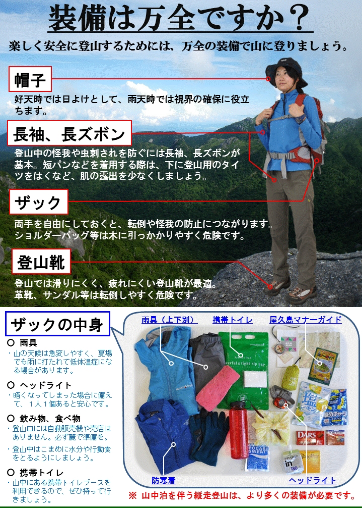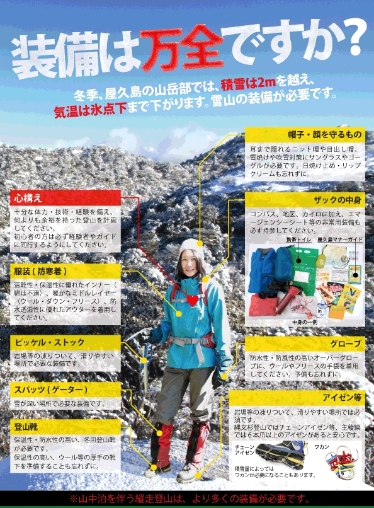Required Equipment
Equipment required when trekking in the mountains of Yakushima Island.
Yakushima Island has steep mountainous terrain. Even if the weather is fine in the village, the weather in the mountains can change suddenly, and rain gear suitable for the mountains is a must. Even for day trips, the following items are necessary to stay safe and enjoy the mountains of Yakushima Island: thermal wear (in winter, clothing appropriate for -10℃ - -15℃), food (chocolate, candy etc.), flashlight, map, compass, whistle, and mobile phone (or 2-way radio).

Summer Equipment
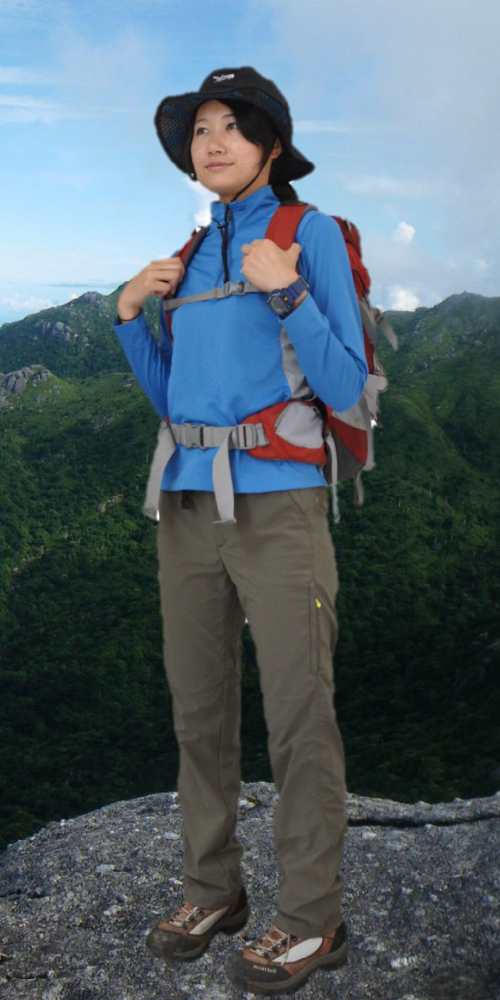
-
Point1
Hats
Provide protection from sun when the weather is good and helps ensure a good field of view on rainy days.
-
Point2
Long-sleeve shirts and long pants
Prevent injuries and bug bites.
-
Point3
Backpacks
Keeps your hands free to prevent falls and injuries.
-
Point4
Trekking boots
The best trekking boots are those that help prevent slipping and fatigue. Leather shoes and sandals are dangerous because they can lead to slipping and falls.
-
Point5
Rain gear
The weather in the mountains can change suddenly, and becoming wet can result in hypothermia, even in summer.
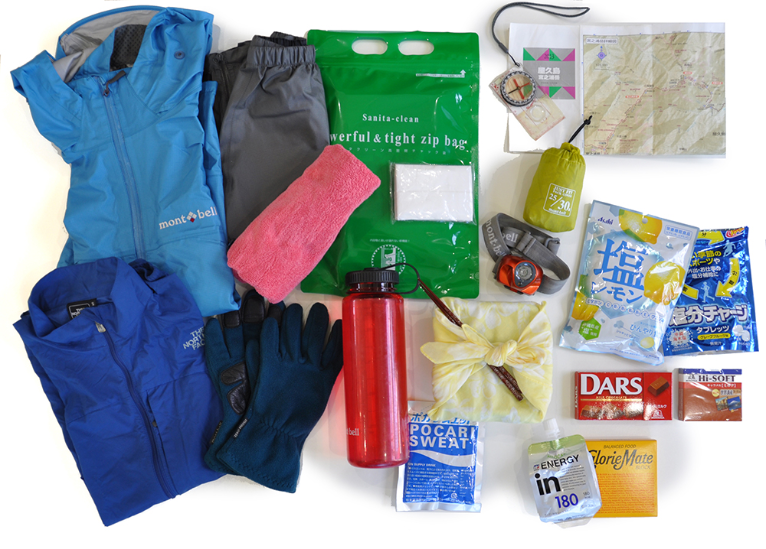
What to carry in your backpack - examples
Portable toilets, drinks, food, headlamp, and thermal wear (ensures peace of mind even in summer).
Winter Equipment
The mountains of Yakushima Island can receive more than 2 m of snow in winter, with temperatures below freezing. Ensure that you have sufficient physical strength, skills, and experience, and prepare a hiking plan with a margin for unforeseen circumstances.
Beginners should be sure to accompany more experienced trekkers or guides.
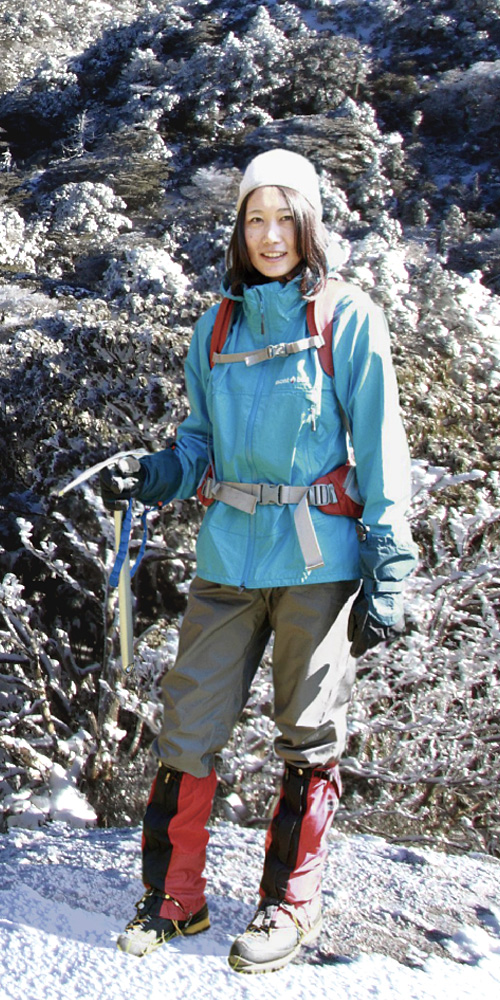
-
Point1
Hats and face protection
Do not forget knit-caps that also cover the ears, and protection against snow-burn and blizzards.
-
Point2
Thermal wear and tights
Wear underwear and outerwear appropriate for snowy conditions.
-
Point3
Ice axes and trekking poles
Necessary on frozen and slippery surfaces such as rocks.
-
Point4
Winter climbing boots and crampons
Winter climbing boots with good heat-retention and waterproof qualities.
Depending on location, you may also need chains, crampons, and snowshoes. -
Point5
Gloves
Good quality water-resistant and wind-resistant outer gloves, and woolen gloves. Preparation is essential.
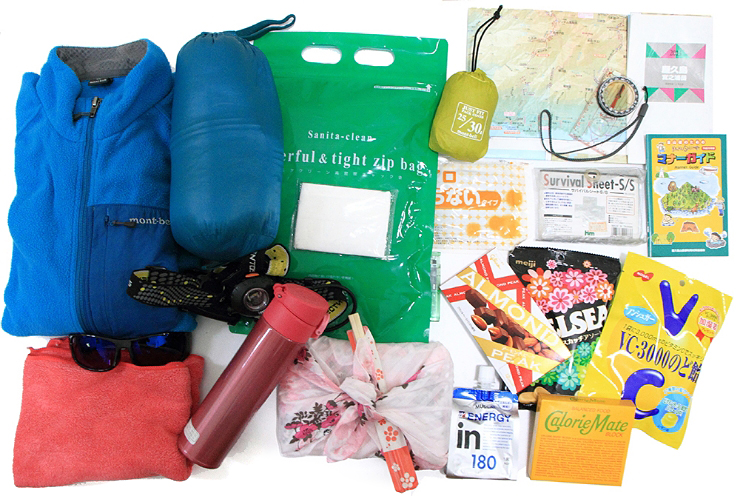
What to carry in your backpack - examples
Be sure to bring a compass, a map, a pocket warmer, and also emergency equipment.
Equipment Suitable for Sight-seeing is Not Enough, Even for Day Trips
According to a 2004 survey by the Yakushima Ranger Office, 58% of visitors to the Jomon-sugi Cedar are not regular trekkers. As more users lack the proper equipment for, or attitude toward trekking, the frequency of accidents and dangers increases. This undermines the quality of the experience (satisfaction) offered by the mountains of Yakushima Island.
You will need thermal wear, food (chocolate, candy etc.), a flashlight, topographic map, compass, whistle, and mobile phone (or 2-way radio) in case of emergency, even for day trips. Clothing should include a long-sleeve shirt, long pants (short pants often result in injuries), mountain footwear (it is easy to slip when wearing sneakers, spiked boots can damage the roots of trees).

More and more tourists arrive lightly equipped with short pants, sneakers, and handbags and this has resulted in accidents.
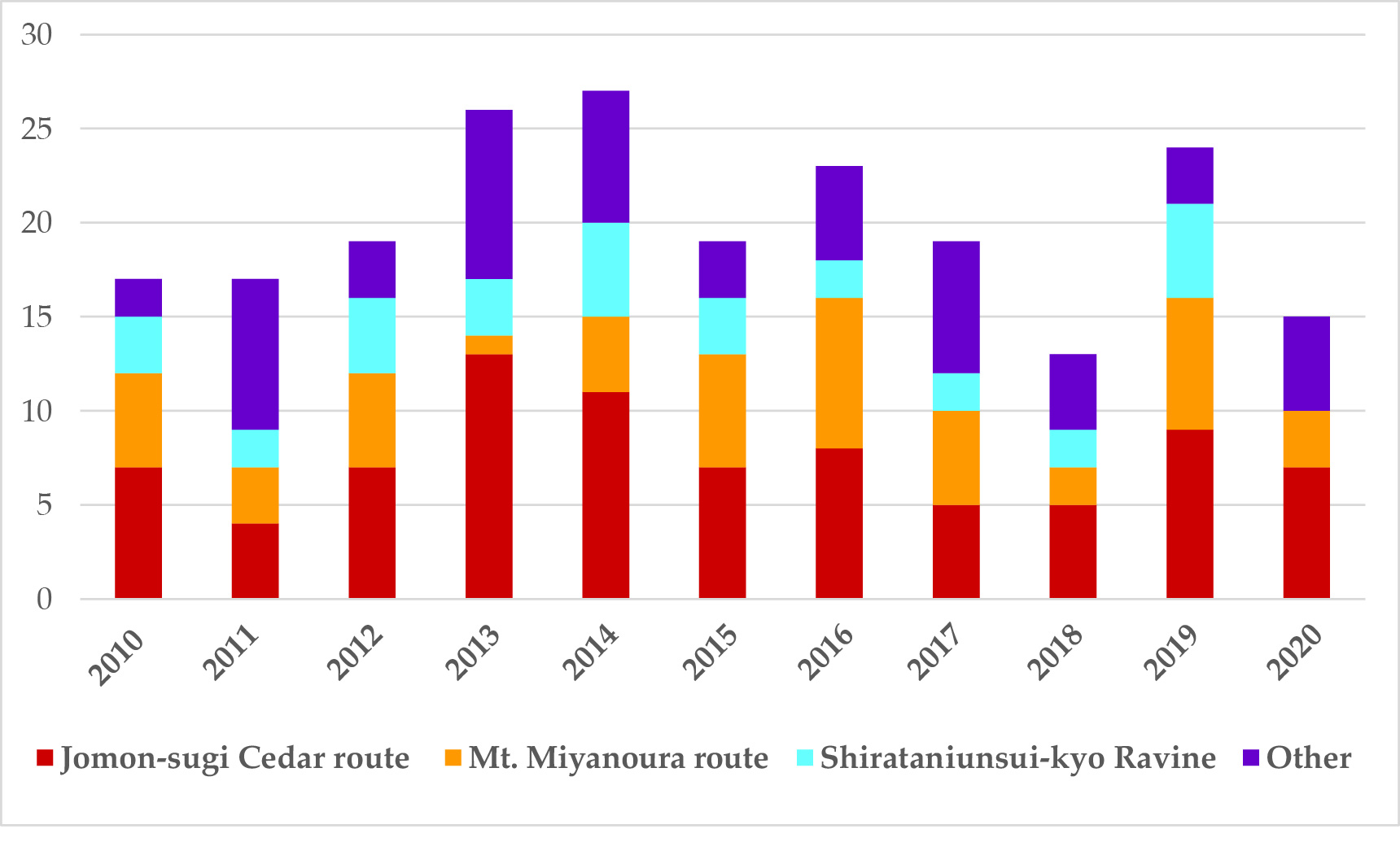
Trend in number of accidents and injuries in the Yakushima Mountain area (unit: cases)

